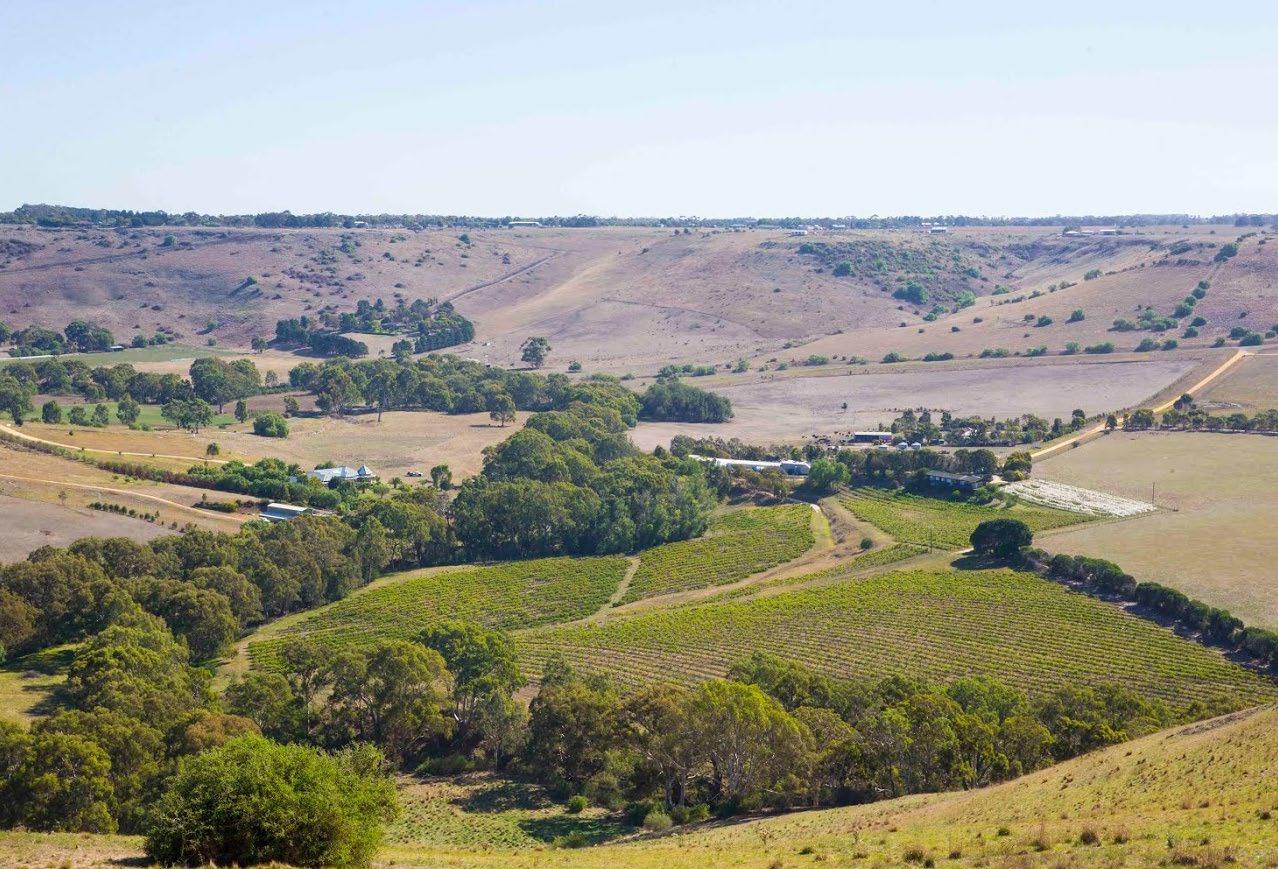acknowledgement of country
Golden Plains Shire spans the Traditional lands of the Wadawurrung and Eastern Maar Peoples. Council acknowledges them as the Traditional Owners and Custodians and pays its respects to both Wadawurrung and Eastern Maar Elders past, present and emerging. Council extends that respect to all Aboriginal and Torres Strait Islander People who are part of Golden Plains Shire.
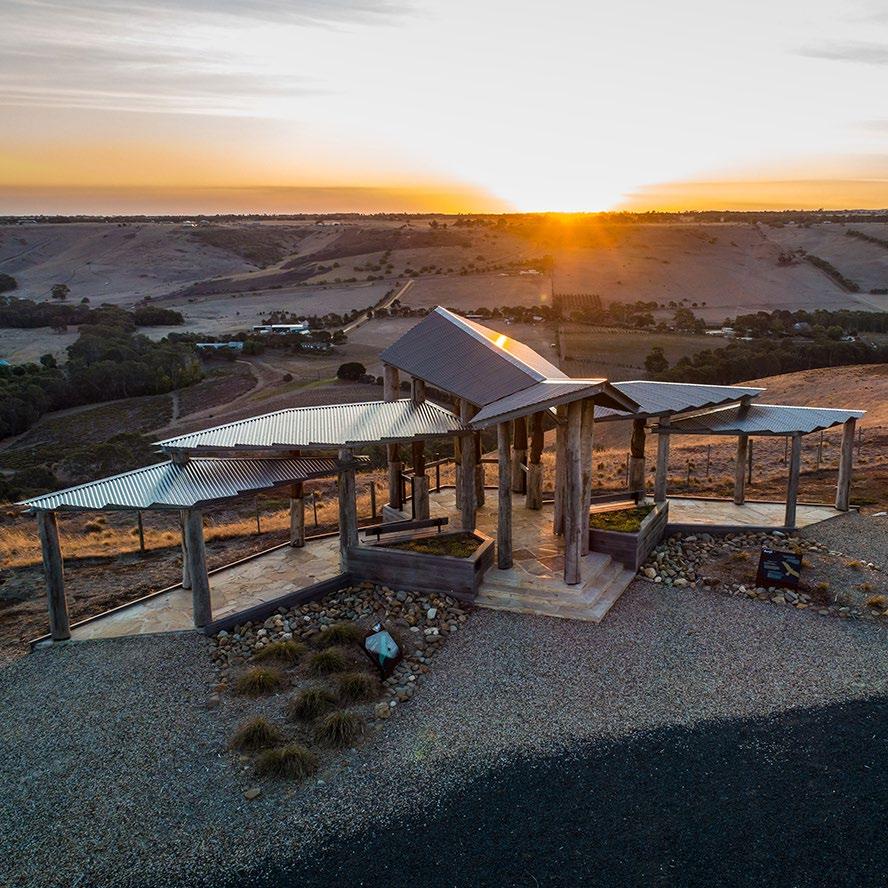 Bunjil lookout on Wadawurrung Country
Bunjil lookout on Wadawurrung Country
Addressing the Climate Emergency 14
FOREWORD
Wadawurrung
Firstly, we would like to Acknowledge all Wadawurrung Traditional Owners, our Ancestors and pay respect to our Elders past, present and emerging.
Wadawurrung Traditional Owners Aboriginal Corporation was appointed in May 2009 as a Registered Aboriginal Party under the Victorian Aboriginal Heritage Act 2006. The Corporation represents Wadawurrung Traditional Owners.
Kareet Bareet (Black Hill near Gordon) is where Bundjil created Wadawurrung people. Lal Lal Falls near Ballarat is where Bundjil created the waterways and where he returned to before heading to his resting place in the stars, continuing to watch over us. Our Dja (Country) is interwoven with relationships no matter whether the shape of that relation is human, granite hills, Waa (Crow) or Larrap (Manna gum).
As Wadawurrung Traditional Owners we live by Bundjil’s lore to care for Country and all things living as our Ancestors have always done for thousands of generations. Our Dja is more than a place - it is a diverse landscape with landforms such as our coastal waters, cliffs, wetlands, grassy and volcanic plains. People were all formed by Bundjil and our Ancestor spirits who continue to live in the land, water and sky.
We are connected to our land, our skies, our waterways, and our coastal areas; keeping them healthy keeps our People and Culture healthy. Our People have endured trauma, violence and dispossession since invasion and have demonstrated resilience to continue their cultural practices which has provided the strength to ensure our survival.
However, due to climate change, an increase in population and development, many things have contributed to the impacts on Country, Water and all that belongs to our Country, that which gives life and sustains us.
In 2020 We released “Paleert Tjarra Dja” Let’s make Country good together, our Wadawurrung Country Plan. It is a 10-year (2020-2030) vision of the aspirations and goals of Wadawurrung People, providing guidance on how to strengthen relationships with Wadawurrung Traditional Owners Aboriginal Corporation.
Wadawurrung people are committed to working together with key stakeholders like Golden Plains Shire Council to ensure we have strong partnerships, engagement, and collaboration to achieve our aspirations and goals, and that our cultural heritage, language, stories and cultural values are protected, and that Wadawurrung People and Country is respected. We look forward to continuing our partnership and presenting a voice for our Traditional Owners and the aspirations of the Country plan and the adoption of the Climate Emergency Plan 20222032.
Koling wada-ngal (Let us walk together) https://www.wadawurrung.org.au/healthy-country-plan-video
Wadawurrung Traditional Owners Aboriginal Corporation
eastern maar
The contemporary Eastern Maar nation traces an unbroken line of descent back to our ancestors over many thousands of years. We have survived as our Country’s First People and, despite the well-documented colonial history, continue to maintain economic, traditional, cultural, familial and spiritual ties to our homeland. Through the leadership and authority of our Elders, we are practicing our laws and customs, strengthening our system of governance and nurturing our connection to Country.
We continue to pass on our traditional knowledge from generation to generation, inducting our young people into Maar society as a cultural practice initiated by our Ancestors. It is a process that keeps customs and stories alive and ensures we are able to maintain Maar culture, language and society. Drawing strength from our identity and past, we are able to live our culture as a set of attitudes, customs, and beliefs; helping us to be resilient and adaptable in changing circumstances.
EASTERN MAAR
Meerreengeeye Ngakeepoorryeeyt - Eastern Maar Country Plan 2015executive summary
In July 2021, Golden Plains Shire Council (Council) declared a Climate Emergency, a resolution for immediate and urgent action to reverse global warming and adapt to changes that society cannot avoid. As part of this resolution, Council committed to preparing its 10-year Climate Emergency Plan to put the declaration’s words into actions.
There is a strong imperative for Council to continue to reduce greenhouse gas emissions and prepare for the changing climate given the expected impact on Council’s strategic goals, operations, assets and service delivery, as well as the health and wellbeing of the community. Now is the time to accelerate this by ramping up the ways Council supports the community and prepare for changes to the Shire. The Golden Plains Climate Emergency Plan 2022-2032 (the Plan) demonstrates Council’s commitment and drives the response to the Climate Emergency.
The Plan outlines the pathway toward net zero emissions for Council operations by 2025 and the mitigation and adaptation actions Council and the community will take together to create a more sustainable future for Golden Plains Shire. Actions are categorised by the following five themes:
Embedding climate action into Council
To lead action on climate change, Council will support renewable energy, facilitate sustainable transport and development, and develop adaptation focussed land management strategies. Council will also work to build understanding and resilience amongst the community and advocate for urgent and bold climate action from both State and Federal Governments.
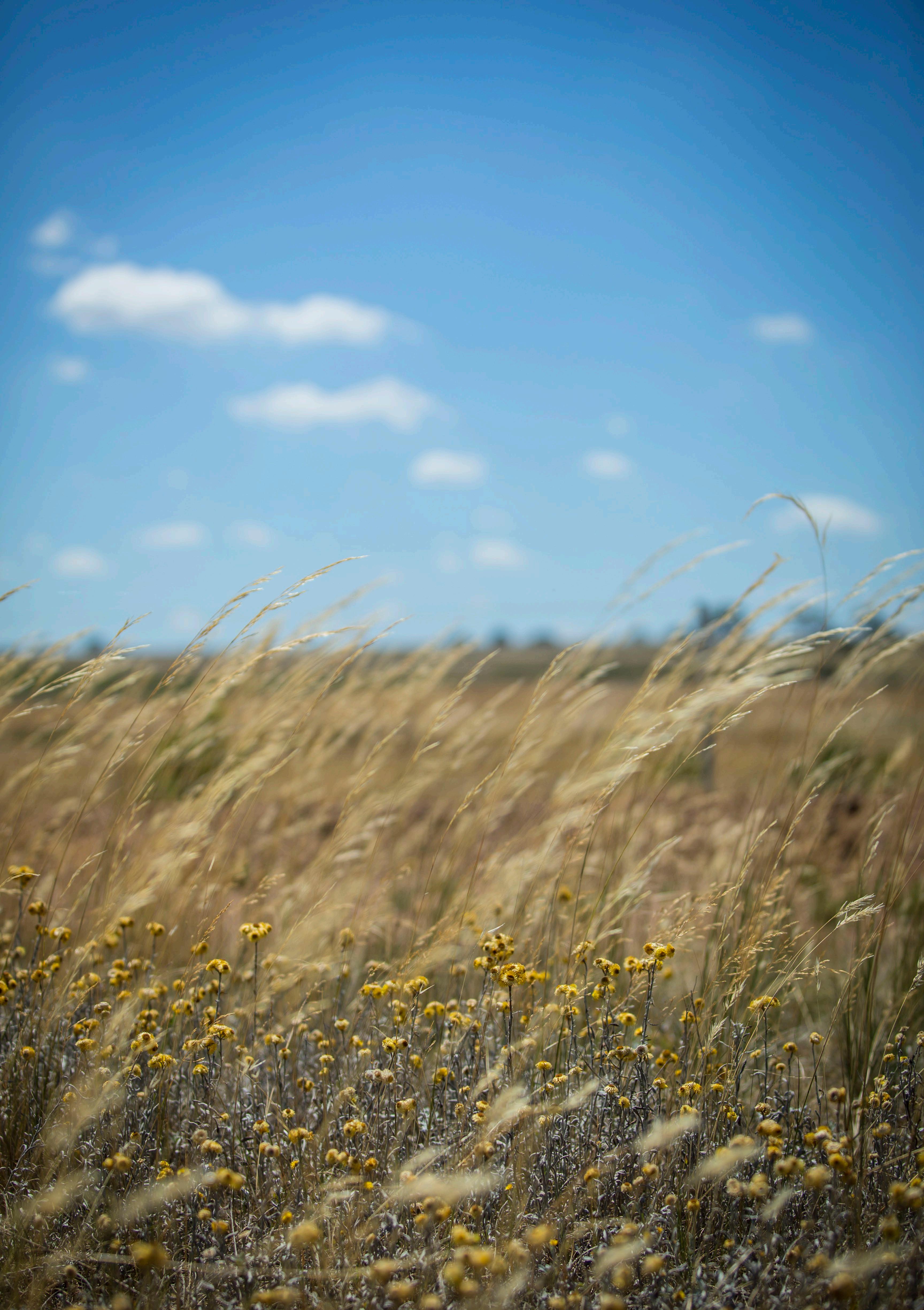
1. introduction
Climate change is a pressing issue for local government that is already manifesting as a legal, social, economic and environmental risk. Local governments make decisions that span generations (e.g. roll-out of infrastructure, planning for future settlements) and as such need to be actively assessing and responding to the direct and indirect risks that climate change presents.
In July 2021, Golden Plains Shire Council (Council) declared a Climate Emergency, a resolution for immediate and urgent action to reverse global warming and adapt to changes that society cannot avoid. As part of this resolution, Council committed to preparing an Climate Emergency Plan (the Plan) to put the declaration’s words into actions. Without a Plan, any actions taken run the risk of being ad-hoc and limited through a lack of coordination with other work occurring in the Shire, across the state and beyond.
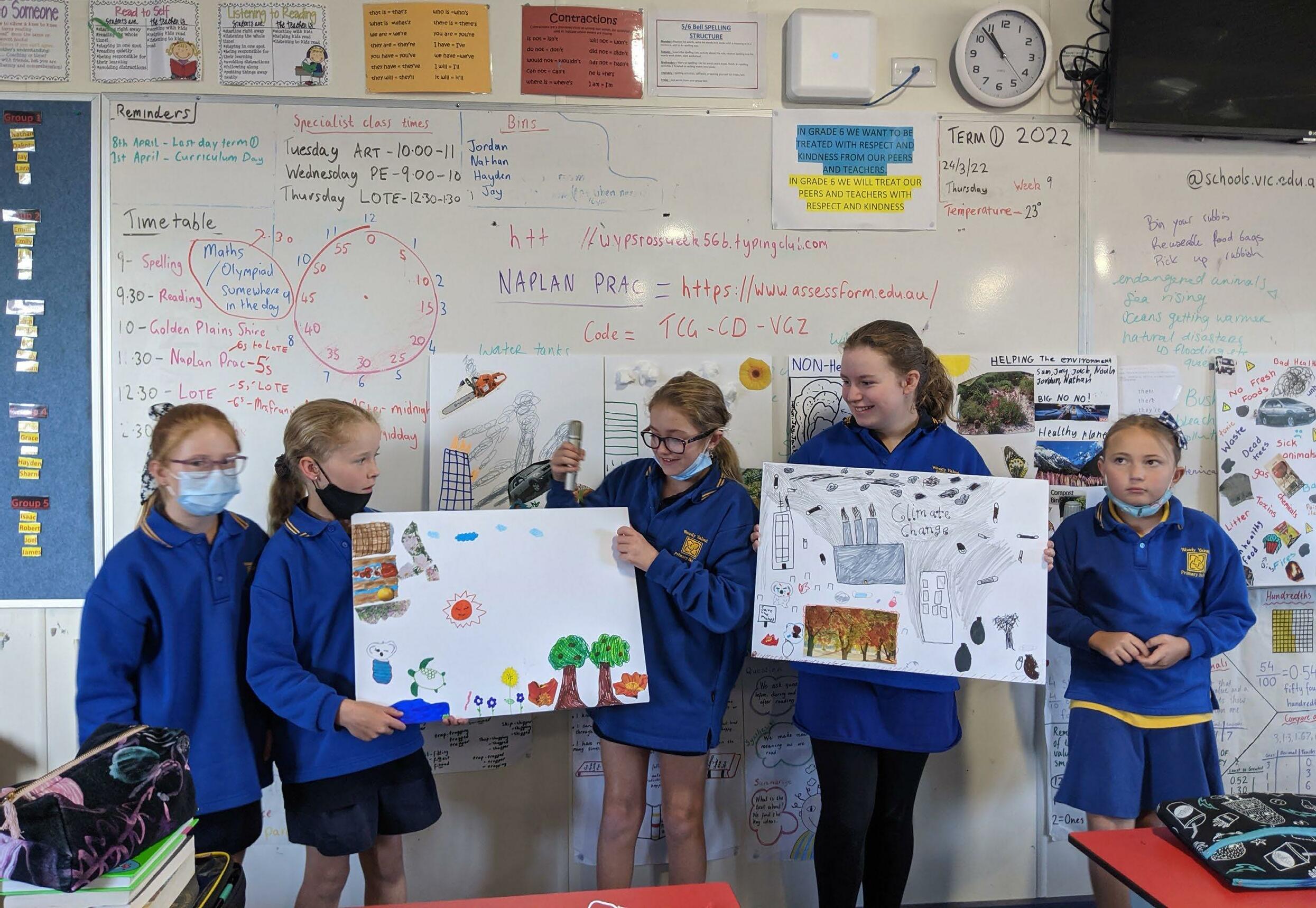 Community engagement at Woady Yaloak Primary School - Ross Creek Campus
Community engagement at Woady Yaloak Primary School - Ross Creek Campus
About this Plan
This Plan is supported by the Golden Plains Shire Council Plan 2021-2025, in which climate change is a recurring theme. Tackling climate change is part of the Golden Plains Community Vision 2040, as a key focus of the sustainability section and one of five health and wellbeing priorities.
The Plan is also supported by Council’s Environment Strategy 2019-2027 whose Theme 4.2 (Climate change adaptation and mitigation) states that Council will aim to foster a community that understands the impacts of climate change, responds positively to future climate conditions and actively reduces their greenhouse emissions1 .
To inform its response, Council relied on peer-reviewed science from the Commonwealth Science and Industrial Research Organisation, The Bureau of Meteorology and the Intergovernmental Panel on Climate Change (IPCC). Where local information is used, Council looked for published and peer-reviewed scientific data, government reports or guidelines, or data used by government authorities in decision-making. Projections from these sources suggest that temperatures will increase, along with more intense rainfall and storm events and the incidence of drought conditions. Average annual rainfall may decline and sea levels are likely to rise.
This Plan also draws from the Wadawurrung and Eastern Maar Country Plans, which speak about each Registered Aboriginal Parties’ cultural knowledge, values and priorities. Council acknowledges their wealth of knowledge of the land, sky and waters, and their custodianship of the land for tens of thousands of years, and is committed to strengthening these partnerships and aligning our aspirations.
“Our Ancestors were the original scientists. A deep understanding of the earth, the seasons and how we interact with them guided how we used to live. They knew how to use plants for tucker, medicine and materials; how to manage Country so that it would provide for them year after year; how to build tools and weapons and canoes.”
- Eastern Maar Country Plan (2015), page 37
The Country Plans are available to view:
1. Wadawurrung Healthy Country Plan, Paleert Tjaara Dja - Let’s Make Country Good Together 2020-2030
2. Eastern Maar Country Plan, Meerreengeeye Ngakeepoorryeeyt 2015
While Council acknowledges its role in managing some of the impacts of climate change, the most effective climate change adaptation requires a shared response from all levels of government, stakeholders and community. Hence, the Plan outlines actions that are within Council’s control, including collaborating with the community, relevant organisations and Traditional Owner groups to develop and deliver actions that will help to manage common climate change risks that will impact everyone.
2. SCOPE AND OBJECTIVES
The timeframe of the Plan is from 2022 to 2032 and its scope includes actions to mitigate, adapt and respond to climate change in Golden Plains Shire. It is a Plan for the whole of Shire - it includes actions Council will undertake as well as those that will be undertaken in partnership with the community. Actions include those things that Council can control, partner and advocate for that relate to the Climate Emergency and transition the Shire to net zero emissions.
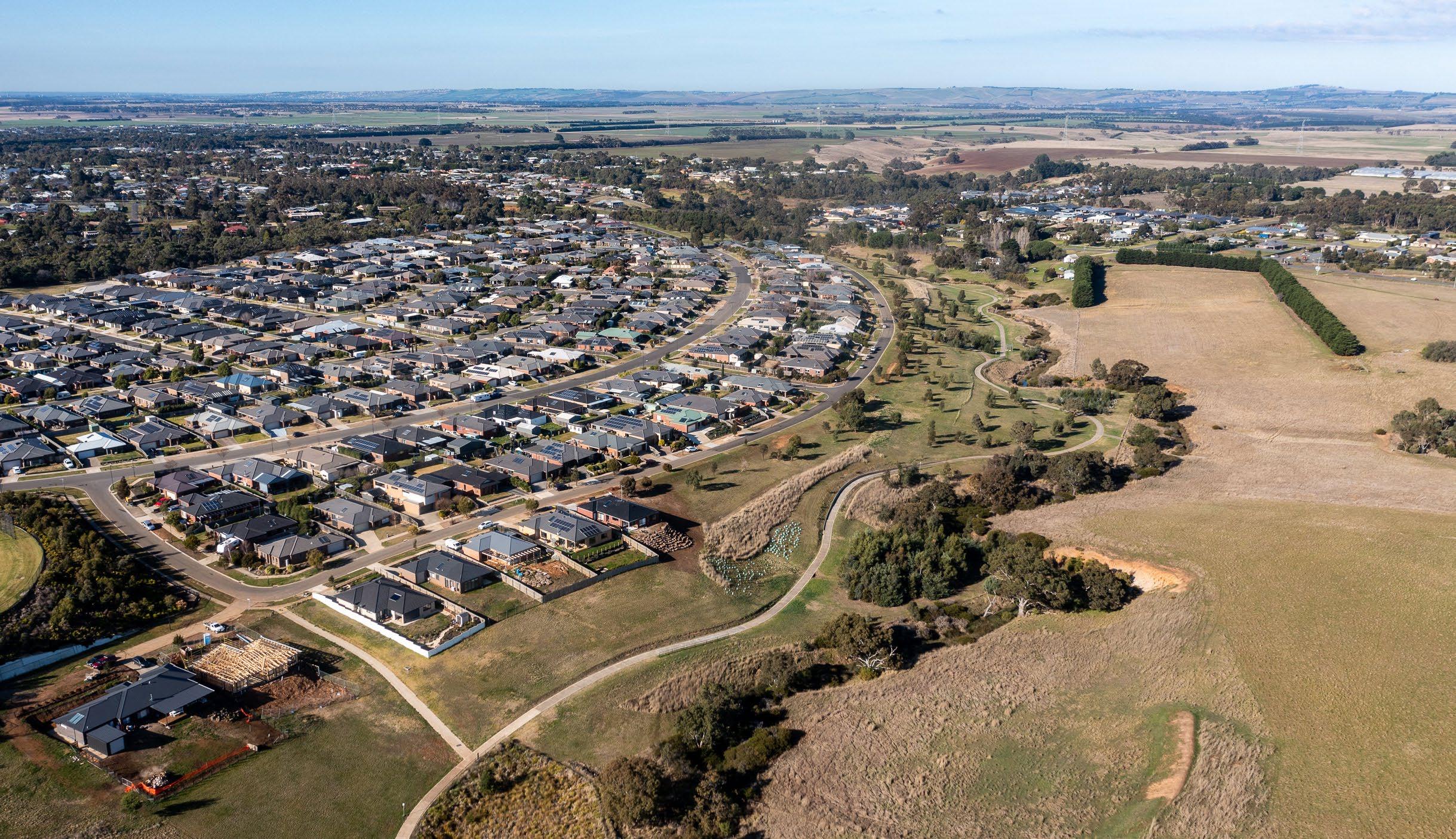
Key objectives of the Plan include to:
1. Demonstrate Council’s commitment to taking action on climate change by acknowledging that urgent action is required by all levels of government, including local councils.
2. Drive Council’s response to addressing the Climate Emergency by committing to actions to mitigate emissions.
3. Support communities across the Shire to adapt to current and future climate impacts.
3. CONTEXT
AUSTRALIA AND CLIMATE CHANGE
According to the IPCC, the average annual global greenhouse gas emissions were at their highest levels in human history between 2010 and 2019. Limiting warming to around 1.5°C requires global greenhouse gas emissions to peak before 2025 at the latest, and be reduced by a quarter by 20302 .
“We are at a crossroads. The decisions we make now can secure a liveable future. We have the tools and know-how required to limit warming.”
- IPCC Chair Hoesung LeeIn Australia, there has already been unprecedented warming over the last few decades, with 2019 being the hottest and driest year ever recorded. The summer of 2020 saw catastrophic fire danger ratings at locations and times of the year that have never been seen before. The best outcomes for our climate come from collective action, and many local councils, businesses, and communities across Victoria are already playing an important role.
A key document used to inform this Plan is the Grampians Region Climate Adaptation Strategy 2021-25, which was developed by local stakeholders to address the unique challenges faced by the Grampians region. In addition, there are three pieces of legislation that underpin Council’s Climate Emergency response:
1. Victorian Local Government Act 2020 sets a clear expectation that the long-term negative impacts of climate change on future generations should be considered in Council planning, decision-making and actions.
2. Climate Change Act 2017 requires Council to consider climate change through the Municipal Health and Wellbeing Plan and calls on Councils to put forward an emissions reduction pledge.
3. Renewable Energy Act 2017 legislates the renewable energy generation target of 50% by 2030 for Victoria.
“We are the protectors and carers of this Country and this Country protects and cares for us. We belong to and are spiritually connected to this Country and this Country is part of us. We are inseparable, no matter where we are, we are bound together.
When Country is sick, we are sick.”
- Wadawurrung Country Plan (2020-2030), page 26
Impact of climate change on the region
Golden Plains Shire is located in south-western Victoria covering an area of 2,705 square kilometres. Golden Plains is a predominantly rural area with a population of just under 25,000 across 16 townships3, bordered by the regional cities of Geelong to the south and Ballarat to the north.
Climate change is already impacting Golden Plains Shire. The following impacts are expected into the future:
• Maximum and minimum daily temperatures will continue to increase year-round over this century. By the 2030s, an increase in daily temperature of 0.8 to 1.5 degrees is expected4.
• Harsher fire weather and longer fire seasons will exacerbate an already bushfire prone Shire.
• Increased frequency and intensity of heatwaves and storms will continue to put vulnerable people, industries and infrastructure at risk.
3Golden Plains Shire Council Plan (2021-2025)
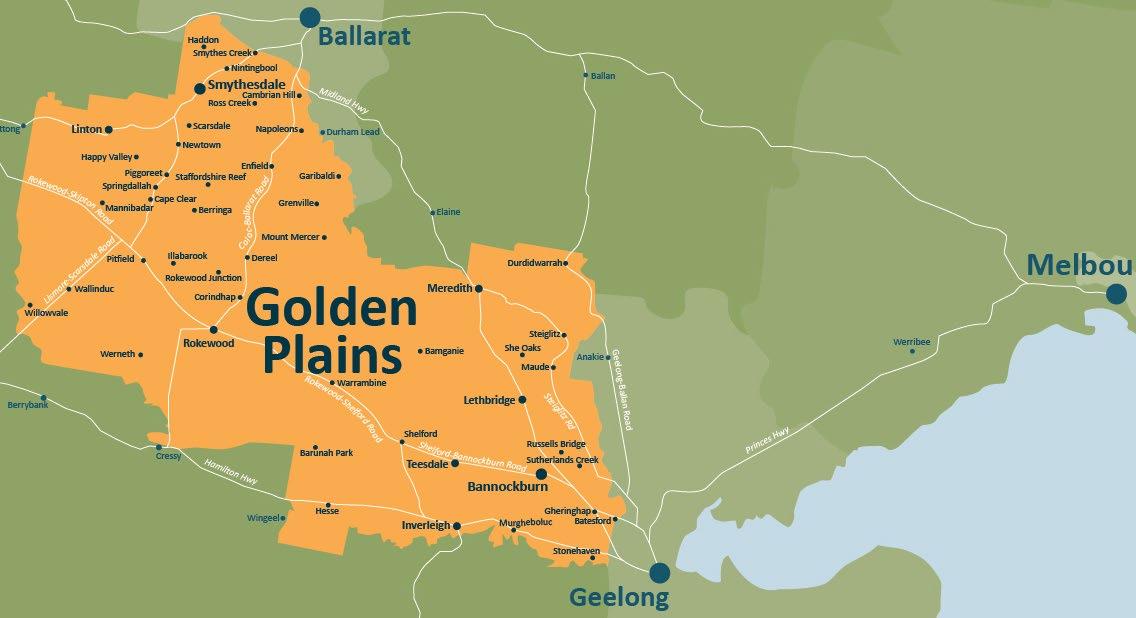
4Adapt Grampians (2021-2025), Grampians Region Climate Adaptation Strategy
• Species and ecosystems will continue to experience increased pressure due to the increasing frequency and severity of extreme weather events, and changes to rainfall and waterway flows.
• The health and wellbeing of the community will be further impacted by heat-related illness and death, diseases and adverse mental health and economic impacts.
4. Golden Plains Shire Emissions Profile
Community-wide Emissions
Approximately 433,313 tCO2-e were emitted in Golden Plains Shire in 2019, as shown in the figure5 to the right.
RESIDENTIAL EMISSIONS
About 150,000 tCO2-e were emitted in residential emissions in 2019, 49% of which is a result of electricity use (see figure below). This is about 17 tCO2-e per dwelling per year. Residential emissions comprise 35% of the Shire’s overall emissions.
COMMERCIAL EMISSIONS
In 2019, approximately 284,000 tCO2-e were emitted through commercial means, the majority of which is attributable to agricultural operations. Commercial emissions have the biggest impact in Golden Plains, accounting for 65% of overall Shire emissions.
CORPORATE EMISSIONS
Council’s total corporate emissions during the 2018/19 financial year were approximately 2,016 tCO2-e, 2% of the Shire’s overall emissions6
Transport fuels is currently the largest contributor to Council’s emissions, accounting for 46% of total corporate emissions. Following Council’s commitment to purchase 100% renewable energy for all electricity use from 1 July 2021, corporate emissions were reduced by almost 52%. This means there are still approximately 1,280 tCO2-e to address through the scope of the Plan.
The next two sections outline Council’s emissions target as well as how Council will achieve its goal.
5. emissions target
While Council’s own emissions are only approximately 2% of all Golden Plains Shire’s emissions, Council plays a role in leading and inspiring change.
There is a strong imperative for Council to continue to reduce greenhouse gas emissions and prepare for the changing climate given the expected impact on Council’s strategic goals, operations, assets and service delivery, as well as the health and wellbeing of the community.
While Council has worked to reduce emissions to a degree, it is time to accelerate this, and ramp up the ways we support the community and prepare for changes to the Shire and community.
In the Climate Emergency Plan community survey, 73% of respondents indicated they support Golden Plains Shire Council going carbon neutral before 2030.
Through the Plan, Council commits to pursue net zero emissions for Council operations by 2025.
“It is in the self-interest of humanity to avoid pushing Earth’s life-sustaining ecosystems across tipping points. The Landcare movement is one of a number of organisations working to protect these ecosystems. With the support of the Golden Plains Shire’s Climate Emergency Plan we hope to see sound policy and action to prevent these tipping points from ever being reached.”
- Batesford Fyansford Stonehaven Landcare Group
This target has been set based on the scale and speed of change required and the opportunities available to achieve deep cuts to emissions. The following section discusses how Council will reach these targets, based on the carbon management hierarchy shown in the figure below:
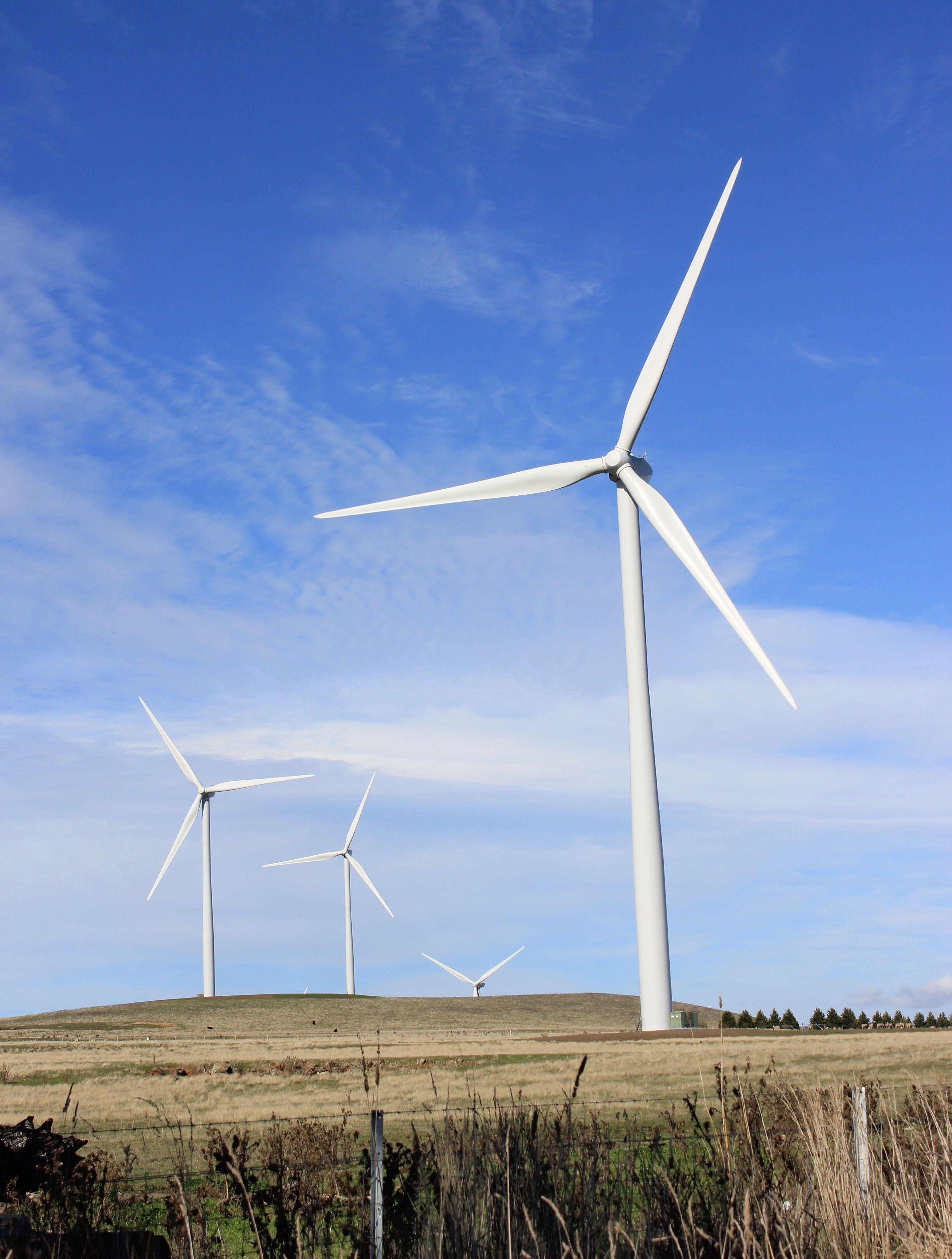
6. ADDRESSING THE EMERGENCY
Introducing the plan
The following Plan outlines Council’s climate mitigation and adaptation priorities for action on climate change over the next 10 years. The Plan identifies the actions Council will take to respond to the Climate Emergency and actions Council, together with the Golden Plains Shire community, will work on to create a more sustainable future together. The implementation of the Plan requires a Council-wide response and collaboration with both the community and other organisations.
A Climate Emergency Plan is a necessity not a luxury. Strong action, foresight and unprecedented levels of collaboration across all sectors of the Shire (and beyond) is vital. The next 10 years of action are critical and this Climate Emergency Plan is an essential tool for informing our collective response.
- Golden Plains Shire community member
Actions are informed by consultation with stakeholders including the Golden Plains Shire community, businesses, and Council staff, the details of which are provided in Appendix B. Appendix C outlines how monitoring and reporting of the Plan will be undertaken.
To lead action on climate change, Council will support renewable energy, facilitate sustainable transport and development, and implement adaptation focussed land management strategies. Council will also work to build understanding and resilience amongst the community and advocate for urgent and bold climate action from both State and Federal Governments.
The Plan is organised into five themes:
Embedding climate action into Council
Resilient and adaptive community
Caring for the land
Climate responsive development
Sustainable transport and travel
Each theme and associated actions are outlined in the following sub-sections. In the Action tables, the year refers to the year in which the action will commence. Commencement years have been chosen based on current projected resourcing, but where possible will be brought forward. The fourth column, ‘mitigation/adaptation’, refers to whether the action is focussed on reducing emissions (mitigation) or helping adapt to climate change (adaptation). Some actions fall into both categories, noted as ‘both’.
Theme 1: embedding climate action in Council
Immediate action is required by all levels of society to drastically reduce emissions to mitigate the impacts of climate change. Though governments, businesses and communities are seeking to reduce the amount of greenhouse gases they emit, certain impacts of climate change are unavoidable. Therefore, Council is acting to both reduce the Shire’s contribution to climate change, and prepare for the changes the Shire is likely to experience.
“Local governments like Golden Plains are setting good examples which will support and encourage us all to take action. It is too important to leave to others to act. We must consider our children and grandchildren and decide what sort of a future we should leave for them.”
Actions outlined in this section include those that Council will undertake internally and those related to decreasing the footprint of Council events and Council community facilities. What Council is already doing
• Victorian Energy Collaboration - As of May 2021, Council gets all power sourced renewably (52% of emissions).
• Barwon South West Climate Alliance founding member - A collaboration of Councils, catchment management authorities, water authorities and universities in the Barwon South West region looking to take collaborative action on climate change. Founded in October 2021.
• Solar installation - Solar has been installed on Council facilities including the Golden Plains Civic Centre in Bannockburn, the Well in Smythesdale and other smaller facilities such as community gardens, with plans to install more panels.
• Municipal Health and Wellbeing Plan - Priority 5 focuses on tackling climate change and its impact on health.
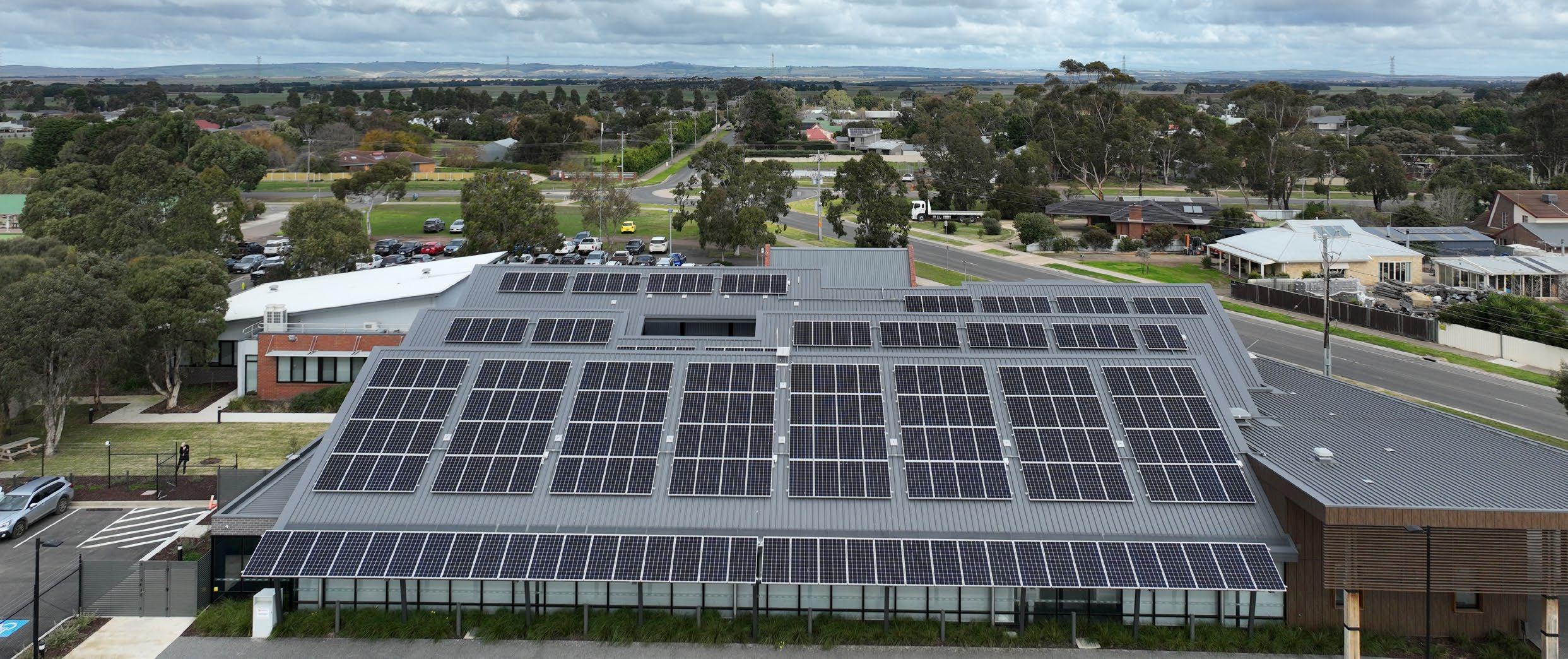
- Friends of Bannockburn Bush
embedding climate action in Council Actions
ID Action
Implementation
1.1 Ensure Council climate risks are recorded and addressed
1. Review risks listed in Council risk register to ensure climate risks are listed along with appropriate mitigation strategies.
1.2 Embed climate change into Council project delivery processes
1. Include climate change considerations as a component of Council’s project management framework.
1.3 Ensure climate change mitigation and adaptation measures are taken into account in new Council building projects
1. Develop an Environmentally Sustainable Design (ESD) Policy.
2. Implement and promote Policy.
1.4 Embed climate change into Council grant processes
1. Revise weighting for assessment of Berrybank Windfarm Community Grant applications to include climate change as a consideration.
1.5 Increase the energy efficiency of Council assets
1. Upgrade street lighting in the Shire to LED.
1.6 Decrease environmental impact of Council events
1. Identify emissions generated from Council events.
2. Develop policy to require all events run by Council or in collaboration with Council to be carbon neutral.
1.7 Future proof Council facilities
1. Audit all Council facilities to identify and prioritise upgrading and implementing mitigation and adaptation features by 2027. Consider which facilities can be considered climate refuges.
2. Invest in upgrading facilities on an ongoing basis.
3. Promote upgraded facilities including those that are suitable climate refuges.
1.8 Decrease water usage at Council facilities
1. Identify baseline water usage at Council facilities.
2. Explore opportunities for reducing water usage by at least 20%.
3. Implement measures to decrease water usage.
1.9 Identify, eliminate and reduce Council emissions wherever possible. Where eliminating or reducing emissions isn’t possible, purchase carbon offsets
1. Seek and work with partners to create and promote local and regional offset opportunities.
Start year Mitigation/ Adaptation
Both
Mitigation
Both
Both
Mitigation
Mitigation
Both
Both
Mitigation
Action
Implementation
1.10 Embed climate change into Council induction practices
Develop an information pack with key facts.
Host a quarterly session to ensure new employees are educated about Council’s climate change efforts during their induction period.
Require all employees to attend a session.
1.11 Increase Council staff knowledge about the Climate Emergency
Develop a Climate Emergency course to put up on Council’s staff learning platform.
Offer and promote the course.
Investigation
1.12 Decrease emissions generated by single-vehicle travel
Investigate a carpooling system for Council staff.
Promote and launch system.
1.13 Reduce emissions generated by Council fleet
Planning
Commission development of feasibility study to convert Council vehicles to electric.
Develop transition plan based on feasibility study.
Replace fleet based on transition plan.
1.14 Embed climate change into Council procurement processes
Update procurement policy to include sustainability targets.
Update tender applications to include sustainability criteria tailored to the type of suppliers.
1.15 Reduce Council’s Scope 3 emissions
Commission a report on Council divesting from fossil fuel investments.
Implement report.
1.16 Decrease the environmental impact of road, footpath and playground materials
Identify research institutions exploring use of low carbon and/or high recycled content concrete and asphalt/emulsion options.
Undertake benchmarking research to understand what is being done by other Councils.
Plan transition from current materials to new materials.
Implement use of new materials.
Advocacy
1.17 Advocate to the Victorian and Australian governments to declare a climate emergency and to act in accordance with climate science
year
Both
theme 2: Resilient and adaptive communities
Climate change will impact everyone in the Shire. Direct impacts include increased intensity and frequency of extreme weather events such as prolonged heatwaves, drought, floods and bushfires. Indirect impacts include worsening air quality, changes in the spread of infectious diseases, risks to food safety and drinking water quality, and effects on mental health7
These risks will have a greater impact on those who are already vulnerable such as older people, people with disabilities, or those in unsecure housing.
Council plays a key role in educating and sharing information with residents, schools and businesses.
To address the Climate Emergency, Council will use its leadership and resources to partner with the community, other Councils, Traditional Owner groups and the Barwon South West Climate Alliance to amplify community voices and undertake collective advocacy and action.
“Great spirit Bundjil told us to take care of the great life within the land. To only take what you need without selfishness. Wadawurrung shared their knowledge of singing, dance, trade, camps, fishing, hunting, paintings, and homes to us to protect for our future generations. We all need to help11.”
- Stephanie Skinner, Wadawurrung Country Plan (2020-2030), page 2
What Council is already doing
• Edible Gardens Program - Council hosts a series of webinars aimed to educate the community on how to grow food at home without the use of chemicals.
• Reusable nappy workshops - Council is providing educational workshops and a set of cloth nappies for parents with babies to encourage the uptake of reusable nappies.
• Community Strengthening Environment and Sustainability grant stream - Funding opportunity for community groups seeking to do environment and sustainability focussed projects.
• Solar funding - Council has received $39,000 in funding to assist with installing solar panels on community facilities.
Did you know?
Heat is the most direct consequence of climate change. Heatwaves cause more deaths than any other natural hazard.
Adapt Grampians (2021-2025), Grampians Region Climate Adaptation Strategy
Did you know?
Golden Plains is one of Victoria’s premier areas for intensive agriculture with a large portion of rural land used for wool, beef, chicken, pork, lamb, eggs and grain production, as well as viticulture.
Golden Plains Shire Council Environment Strategy (2019-2027).
7Adapt Grampians (2021-2025), Grampians Region Climate Adaptation Strategy.
ID Action
Start year Mitigation/ Adaptation Implementation
2.1 Embed climate change into Council community grant processes
1. Update assessment criteria for Community Strengthening Grant applications to require climate change as a consideration.
2.2 Increase the community’s knowledge about climate change through art
1. Identify community-led climate focused art projects (for example, working with GPArts Inc.).
2. Collaborate with the community to deliver art projects.
2.3 Embed climate change into Council programming
1. Present Council’s Climate Emergency Plan during each Community Leadership Program.
2. Include tackling climate change and its impact on health as a criteria in the Community Leadership program project development process.
2.4 Identify opportunities for improving Farmers Market practices
1. Assist in audit process to identify opportunities for sustainable practices.
2. Develop sustainability guidelines for stallholders at Council run markets.
3. Incorporate findings from audit into future planning processes, dissiminate guidelines to stallholders and provide ongoing support.
2.5 Increase the number of mitigation and adaptation focused projects undertaken by community in the Shire
1. Plan resourcing and application guidelines for the establishment of a Climate Emergency stream in the Community Strengthening Grants program.
2. Establish the new grant stream.
2.6 Assist schools to embed sustainability into their practices
1. Promote and support schools to sign up to become a Resource Smart school through Sustainability Victoria.
2.7 Increase the community’s ability and knowledge to grow their own food
1. Identify areas for new or expanded community gardens.
2. Expand community gardens and educate residents about growing food.
2.8 Decrease the environmental footprint of community facilities
1. Offer free sustainability audits for community facilities not falling within Council’s remit.
2. Support implementation of upgrades (for example, support applying for grants, exploring bulk buy opportunities, fund matching).
2.9 Embed climate change into community project processes
1. Update the assessment criteria for community seed funding applications to require climate change as a consideration.
2. Review and update the Community Coordinator toolkit to embed climate change information.
3. Provide education to Community Coordinators about how climate change may impact their community.
4. Offer community education and capacity building initiatives.
Both
Adaptation
Both
Both
Both
Both
Both
Both
Both
ID Action
Collaboration
2.10 Increase the community’s knowledge about solar and battery storage
1. Facilitate access to expert advice on solar and battery storage for Golden Plains Shire businesses and residents.
2.11 Increase student engagement with the natural environment
1. Develop a planting fund for all primary schools to plant annually on school or public land.
2. Promote the funding opportunity to schools.
3. Follow up with schools to monitor progress via survey, photos and conversations with teachers.
Investigation
2.12 Increase business understanding of climate change and increase their capacity to reduce their emissions and adapt
1. Develop and disseminate a survey for businesses to understand their current sustainability efforts and where support is needed.
2. Analyse results from business survey to identify what support can be provided.
3. Develop and deliver programs to support businesses.
2.13 Improve comfort, reduce energy bills, build climate resilience and improve health outcomes for vulnerable households in the Shire
1. Explore opportunities for building upgrades for vulnerable households including those of older people and people on low incomes.
2. Support implementation of upgrades.
2.14 Increase agricultural business capacity to reduce their emissions and adapt
1. Investigate how Council can best support agricultural businesses to respond to the climate emergency.
2. Develop plan to support agricultural businesses.
3. Deliver plan.
2.15 Increase students’ knowledge of local food and their ability to grow their own food
1. Investigate options for students to grow their own food (for example, through the Stephanie Alexander Kitchen Garden Foundation).
2. Secure partnership and select schools to participate.
3. Oversee delivery of program.
2.16 Explore implementation of community driven renewable energy in Golden Plains Shire to reduce reliance on fossil fuels
1. Undertake research to better understand steps, costs and other resources required.
2.17 Explore ways to promote efficient resource use in the Shire
1. Investigate feasibility and locations for expanding repair cafes and other spaces that are designed for shared use of resources such as toys, garden tools etc.
Start year Mitigation/
Mitigation
Did you know?
Community energy projects are those in which a community comes together to develop, deliver and benefit from sustainable energy. They can involve energy supply projects such as renewable energy installations and storage, and energy reduction projects such as energy efficiency and demand management.
Community energy can even include community-based approaches to selling or distributing energy.
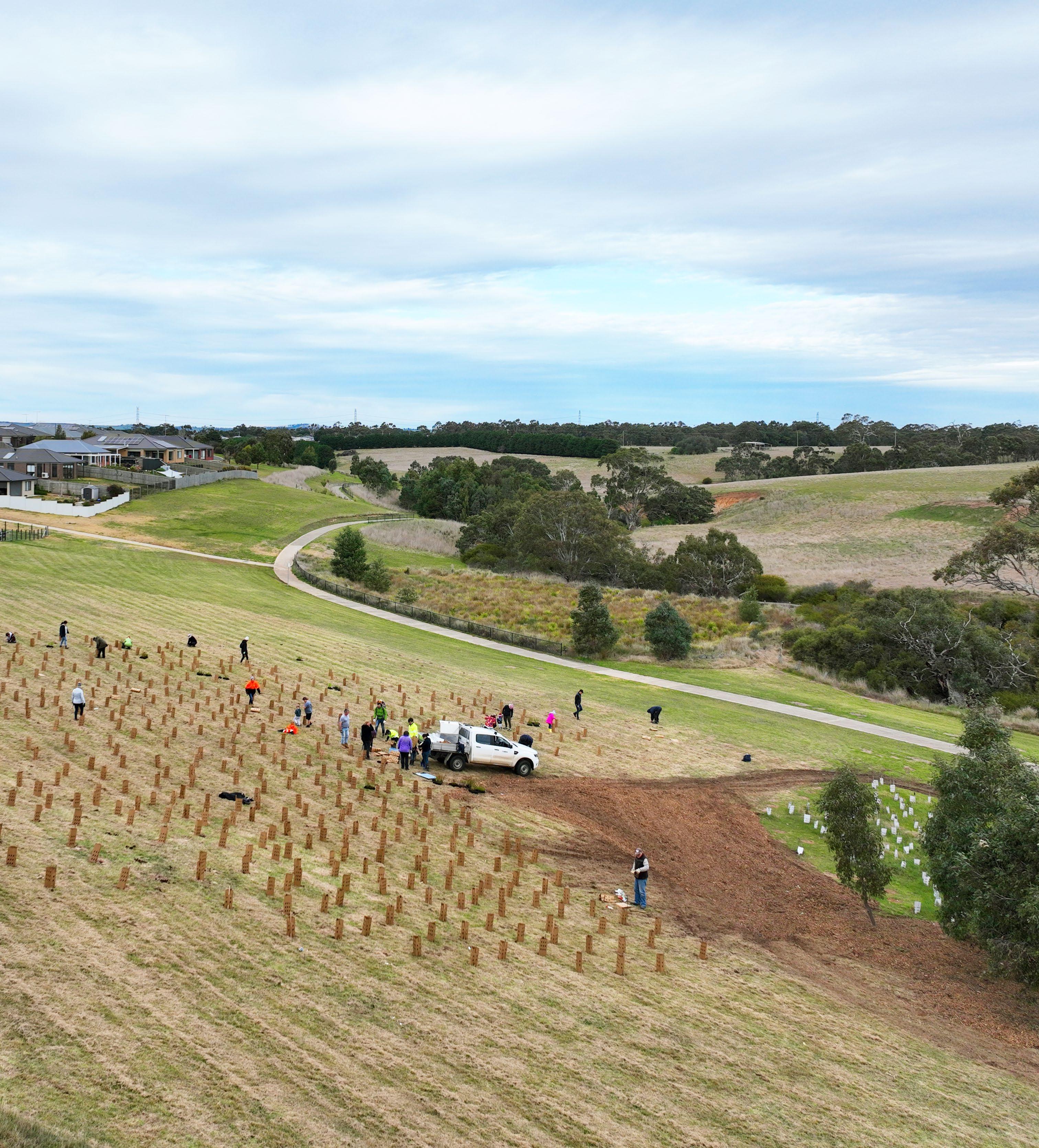 Tree planting at Bruce’s Creek Reserve, Bannockburn
Tree planting at Bruce’s Creek Reserve, Bannockburn
THEME 3: caring for the land
Golden Plains is comprised of two distinct environments or bioregions: the Central Victoria Uplands and the Victorian Volcanic Plains. These bioregions support 372 flora species and 191 fauna species and include three major river systems. Most of the land in the Shire is defined as ‘bushfire prone’.
Traditional Owners and Custodians are the first people to care for the land, cultivated through a deep sense of respect for natural resources.
However, changes to temperature, rainfall, storm and fire patterns due to climate change will put species and ecosystems at risk8 . Harsher fire weather and longer fire seasons will also put people and infrastructure in jeopardy.
“Over thousands of years, our Ancestors developed a deep understanding of natural systems - knowledge that was passed down through the generations. It guided how we cared for Country and how we made sure that it could sustain us year after year.”
- Eastern Maar Country Plan (2015)
The preservation of biodiversity and enhancement of environmental resilience is of vital importance for the function of ecosystems, persistence of wildlife and community safety.
Council’s efforts through this focus area include working to increase the resilience of communities, species and ecosystems.
Relevant threats to Wadawurrung:
Did you know?
Victorian Volcanic Grasslands used to cover much of Wadawurrung Country. The central plains were covered in vast open areas of grasslands with small patches of woodlands. They are classified as a threatened ecological community.
Wadawurrung Country Plan (2020-2032), page 2.
What Council is already doing
Tree planting
• Council has planted more than 10,000 native trees, shrubs and grasses over the last three years with future planting scheduled to restore biodiversity and repair damaged ecosystems.
• Council will participate and support the National Tree Planting day by hosting events and supporting local community groups to undertake their own National Tree Planting event.
• Council is is seeking to implement a street tree planting program, targeting vacant nature strips within townships across the Shire.
•
Pest, plant and animals - Council manages pest, plant and animals throughout its reserve network and implements the Rabbit Management Strategy 2021-2031.
• Fire regeneration - Council has facilitated the return of Traditional Owner use of fire to Council reserves as well as undertaking low intensity, low risk ecological burns with their own burn team to support native flora regeneration and reduce fire risk in key locations.
caring for the land Actions
ID Action
Implementation
3.1 Restore biodiversity and repair damaged ecosystems
1. Consult with Wadawurrung and Eastern Maar for natural resource management advice and opportunities where possible
2. Develop a revegetation plan for Council reserves.
3. Plant a tree for every resident in the Shire.
3.2 Support native flora regeneration and reduce fire risk in key locations
1. Develop a planned burn strategy, incorporating ecological and cultural burning practices requirements and that burns be led by Wadawurrung Traditional Owners where possible.
2. Implement strategy.
3.3 Improve outcomes for the natural environment
1. Deliver against the Regional Catchment Strategy and partner with the Corangamite Catchment Management Authority on land and water management projects including both broad scale management projects and community projects.
Collaboration
3.4 Ensure a healthy and resilient natural environment
1. Continue working with Traditional Owners to embed traditional knowledge and practices into Council’s land management practices.
3.5 Build working relationships with Traditional Owner natural resource management resources for on-ground works, revegetation, fire management and other climate change initiatives
THEME 4: Climate responsive development
Council is responsible for implementing the Victorian Planning Provisions at the local level and prepares and adopts the Municipal Planning Strategy. Council also controls the materials that are used in the facilities it builds and for local infrastructure such as roads, footpaths and other assets.
However, many materials commonly used in the construction of buildings and infrastructure have high embedded carbon emissions. In addition, despite current energy standards and Planning Scheme provisions, most existing Victorian houses perform to low energy standards.
With low or zero carbon, recycled content materials and efficient alternatives becoming more available, there is significant opportunity for climate responsive development across the municipality. Improving building development and operations reduces emissions and increases comfort and affordability in the long term.
Given the number of buildings and expanse of infrastructure that Council builds, owns, manages or influences, Council will take action to lead by example and advocate for change. Council will also support owners, occupiers and landlords to take steps to implement climate friendly features on their property.
Did you know?
Golden Plains Shire is growing quickly with the population estimated to increase to 42,193 people by 2041, serving an important role in the growth of metropolitan Melbourne.
Adapt Grampians (2021-2025), Grampians Region Climate Adaptation Strategy
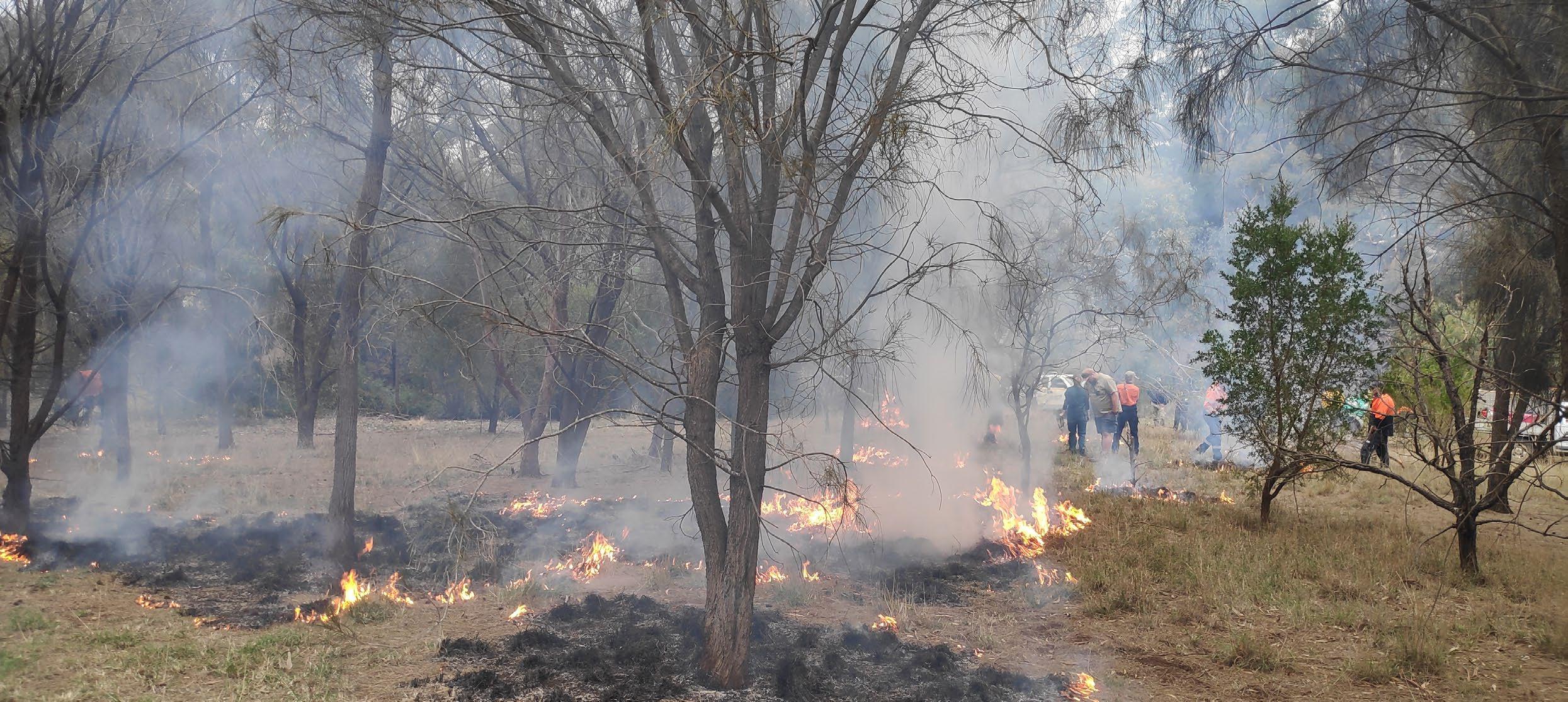
What Council is already doing
• Strategic Bushfire Risk Assessment - Council commissioned an assessment of bushfire hazard to inform a Shire-wide Settlement Plan.
• Planning Scheme Review - To identify opportunities to enhance the effectiveness and efficiency of the Planning Scheme.
• Integrated water management - Council works as part of two integrated water management forums to look for improved ways to manage water across the Shire.
• Green Blue Infrastructure - Council led the development of a guide for Green Blue Infrastructure for small towns. The guide will be used to help Council install infrastructure that’s both waster sensitive and adapted to future climate conditions.
Climate responsive development actions
ID Action
Implementation
4.1 Address impacts of climate change, urbanisation and other water challenges at the regional and local level
1. Identify at least three opportunities for implementing integrated water management projects across the Shire.
2. Implement projects.
3. Support Traditional Owners’ ‘water is life’ roadmap.
4.2 Decrease the environmental impact of new developments in the Shire
1. Investigate options to update the Planning Scheme and Infrastructure Design Manual to include climate change related minimum standards.
2. Engage with Council and community around potential updates.
3. Develop Plan to include relevant changes.
Collaboration
4.3 Support landholders in the Shire to mitigate and adapt to climate change
1. Connect landholders to information and opportunities to implement climate friendly features on their property (for example, renewable energy, regenerative agriculture, grey water tanks, biodiversity protection, sustainable heating or cooling).
2. Investigate incentive opportunities (for example, reduced rates) for having climate friendly features on a property.
Advocacy
4.4 Advocate for stronger sustainability requirements in legislation
1. Collaborate with the Barwon South West Climate Alliance to advocate to the Victorian Government to strengthen its response to climate change by strengthening environmentally sustainable design requirements in the Victorian Planning Scheme to include measures such as zero carbon building standards, green infrastructure, tree protection and ecological connectivity, sustainable transport, electric vehicle charging infrastructure.
Mitigation/
THEME 5: Sustainable transport and travel
Council plays a significant role in planning local transport networks, impacting the transport choices made by the community each day.
However, the number of residents that live near public transport in Golden Plains Shire is significantly lower than the State average. There is also currently no electric vehicle (EV) infrastructure and there is a need for streetscapes and infrastructure that support safe walking and cycling.
As part of this Climate Emergency response, Council will work to reduce barriers to making climate friendly travel choices through improving infrastructure, increasing education and advocating for funding for upgrades to infrastructure.
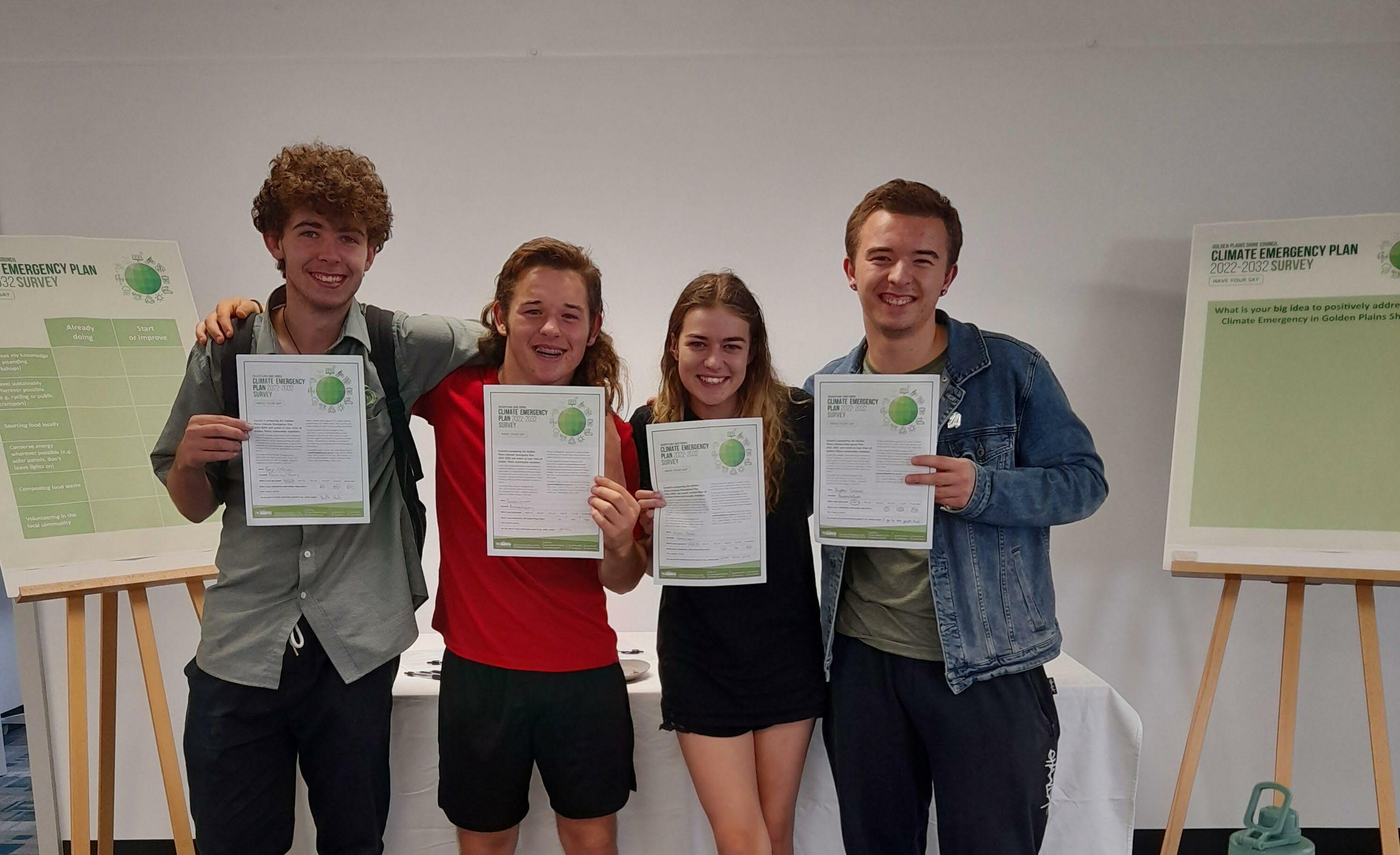
Did you know?
Golden Plains Shire has 1,800 km of road networks, largely used by residents to travel to the larger urban areas of Ballarat and Geelong for schooling, employment and access to goods and services.
Community engagement at the Golden Plains Youth HubWhat Council is already doing
• Integrated Transport Strategy - Council is working with the Geelong Region Alliance9 on a Transport Strategy that will address gaps and weaknesses in the intra-regional transport network through to 2041.
• Tracks and Trails Strategy - This project/strategy will guide Council’s strategic planning, development and delivery of the Shire’s diverse trail network and support active transport, physical activity and engagement with our natural environment.
• Golden Plains Transport Connections Study - The study will identify current and future transport needs in the Shire and provide an evidence base to support advocacy for greater transport connections.
Sustainable transport and travel Actions
Action
Implementation
Provide education to residents about low carbon travel
1. Research organisations to partner with and collate information.
Secure partnership.
3. Host demos and connect interested residents with information about EVs, electric scooters and electric bikes.
Improve the amenity and usability of bus stops in the Shire
1. Audit Council bus stops across the Shire to understand where upgrades are needed.
Plan and priortise upgrades to bus stops across the Shire.
Upgrade bus stops.
Increase active transport in the Shire
Estimate baseline number of residents engaging in active transport in the Shire
Develop an action plan for increasing active transport in the Shire.
Deliver the action plan.
Advocacy
for Golden Plains Shire residents
of the Regional Transport Strategy developed by the G21.
use of
for
combustion engine vehicle use in the Shire
Actively seek grants for funding to install the use of EV chargers in high density areas in the Shire.
Ongoing Mitigation
APPENDIX A GLOSSARY
Term Definition
Active transport
Adaptation
Biodiversity
Carbon dioxide equivalent (CO2-e)
Carbon neutral
Carbon offset
Carbon sequestration
Climate change
Climate Emergency
Physical activity undertaken for transport purposes, rather than recreation, e.g. cycling or walking.
Learning to live with, adjusting or making changes to cope with the impacts of climate change.
The variety of all life-forms and the ecosystems of which they are a part, including plants, animals, fungi, protists (including algae) and bacteria, and their encoded genes.
A measure for simply estimating the global warming potential of various greenhouse gases, such as methane or nitrous oxide, against carbon dioxide.
Achieving an overall balance between greenhouse gas emissions produced and greenhouse gas emissions taken out of the atmosphere, resulting in a net zero amount.
An exchange or reduction of emissions to compensate for emissions made elsewhere, commonly measured in tonnes of carbon dioxide-equivalent (CO2-e).
The long-term storage of carbon dioxide from the atmosphere naturally in plants, soils, water bodies and the ocean, or capturing it with technology and permanently storing it underground.
The long-term rise in global average temperature, caused by human influence, resulting in negative effects such as sea level rise, ocean acidification, extreme weather events, loss of biodiversity and increase in human suffering.
Recognition that urgent action is required to avoid the worst effects of climate change. Declaring a Climate Emergency means that the organisation prioritises and takes a holistic view of how climate change can impact Council activities, the community and environment of the Shire.
Cultural Heritage
Divestment
Environmentally Sustainable Design (ESD)
Greenhouse Gas (GHG) Emissions
Intergovernmental Panel on Climate Change (IPCC)
Mitigation
Net zero (emissions)
The heritage of tangible and intangible heritage assets of a group or society that is inherited from past generations.
Reducing and then eliminating connection to funds invested in fossil-fuel supporting industries, typically through banking, loans, shares and other financial portfolios.
A school of design that seeks to improve building performance, reduce environmental impact, resource use and waste, and create healthy environments for occupants and users.
Gases such as carbon dioxide, methane and others that, when present in the atmosphere, increase the amount of solar radiation absorbed, leading to a rise in global average temperature. GHGs are primarily released by the combustion of fossil fuels.
United Nations body for assessing the science related to climate change. The panel provides regular assessments of the scientific basis of climate change, its impacts and future risks, and options for adaptation and mitigation.
Reducing and preventing emissions of greenhouse gases, and the sequestration of greenhouse gases from the atmosphere.
Carbon emissions are produced, but balanced out with equivalent offsets. Carbon dioxide is captured and sequestered equivalent to the CO2 emitted.
Renewable energy Energy generated from renewable sources such as solar, wind or geothermal, in contrast to the energy from non-renewable fossil fuels such as coal, natural gas or oil.
Resilience
Ability to recover or adapt to changes in environmental and/or living conditions at a personal, community, economic and ecological level.
APPENDIX B METHODOLOGY
Community consultation
The Climate Emergency Plan was informed by consultation with Wadawurrung, community members and businesses. Overall, Council received 636 discrete comments from approximately 200 people.
Stakeholders were invited to provide their thoughts through the following consultation methods:
• Review and input by Wadawurrung Traditional Owner Aboriginal Corporation
• A Have Your Say survey
• Three in-person community workshops in Teesdale, Dereel, Smythesdale and one online workshop
• Booths at the Golden Plains Farmers’ Market, Smythesdale Market, Golden Plains Community Fair in Bannockburn, and at the Bannockburn Youth Hub
• Engagement with students at Woady Yaloak (Ross Creek Campus) and Meredith Primary Schools
• Nine 1:1 interviews with businesses and community groups in the Shire
• Comments sent by email from community members. Most feedback was received via the survey, which had 78 responses, and the community workshops. Most survey respondents indicated they were based in Bannockburn (42%) and fell into the 36 to 50 year age bracket (33%).
What are you currently doing to reduce your impact on the environment? (Survey participants)
compost my food waste
conserve my energy where possible
regularly try to increase my knowledge
source my food locally
- please specify
try to travel sustainably wherever possible
volunteer in my community
With Council support, what would you like to start doing to reduce your impact on the environment? (Survey participants)
Other consultation
The actions were also informed by conversations with staff from seven Victorian Councils that have effective Climate Emergency Plans and Golden Plains Shire internal staff teams. Internal staff teams that were consulted include:
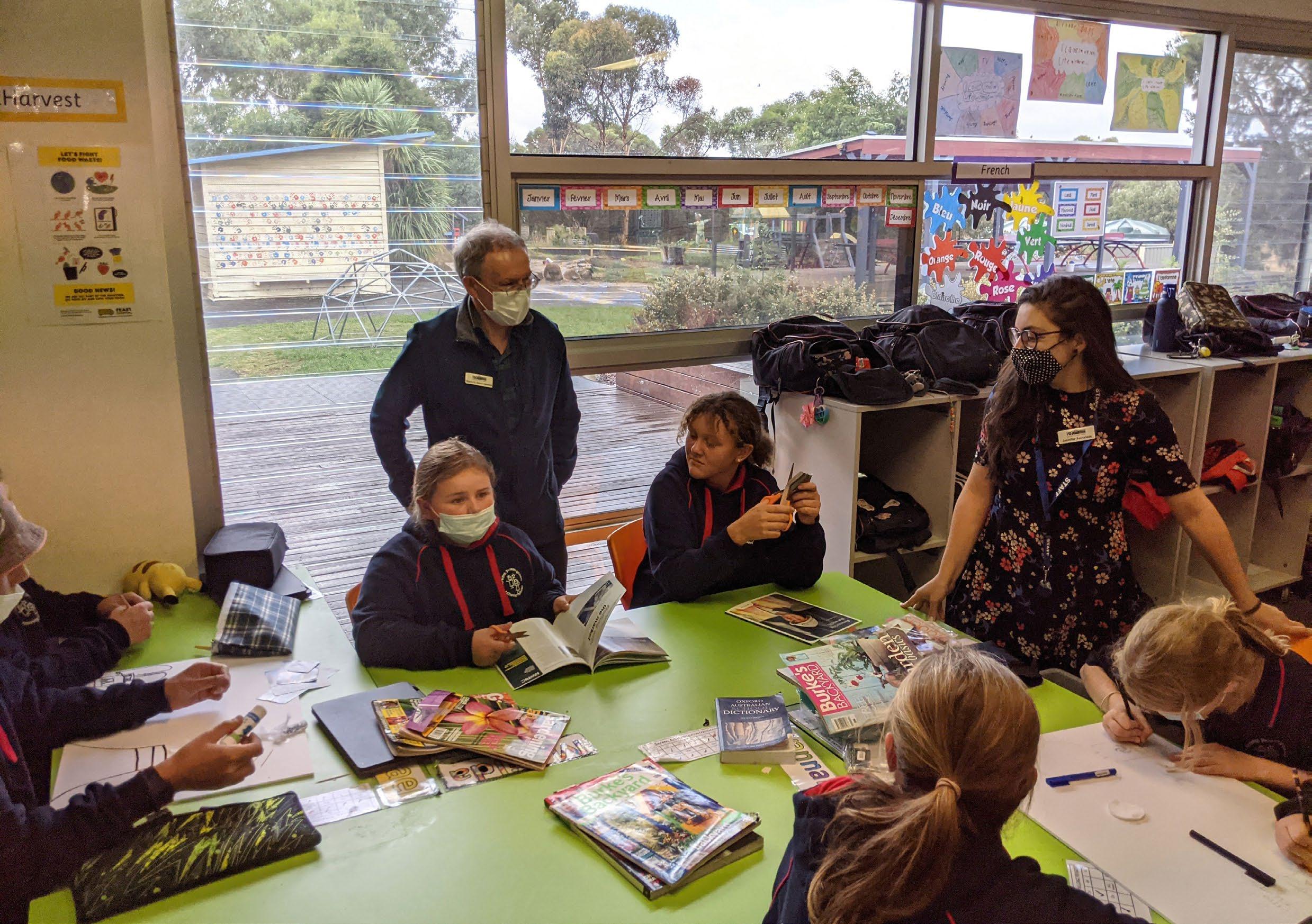
Finance
Strategic planning
Statutory planning
Capital works
Asset services
Health, Wellbeing and Youth
Community Development
Community Safety
Community, Places and Environment
Governance and Risk
Facilities
Development of actions
To ensure all comments and suggestions were considered in the development of actions, the following process was taken:
• A review of more than 10 current Climate Emergency Plans developed by other Victorian Councils was undertaken, providing the opportunity to benchmark actions against current plans.
• Comments from the engagement were then screened based on value for money, feasibility within legislative bounds, the resourcing required to deliver the action and whether the action was already happening through a different Council area.
• Remaining comments were then classified into eight focus areas, shown in the figure below, as well as numerous sub-focus areas, and then grouped together based on similarity.
Classification of comments by focus area
Pictured above: Posters created by students during engagement sessions conducted at local primary schools.
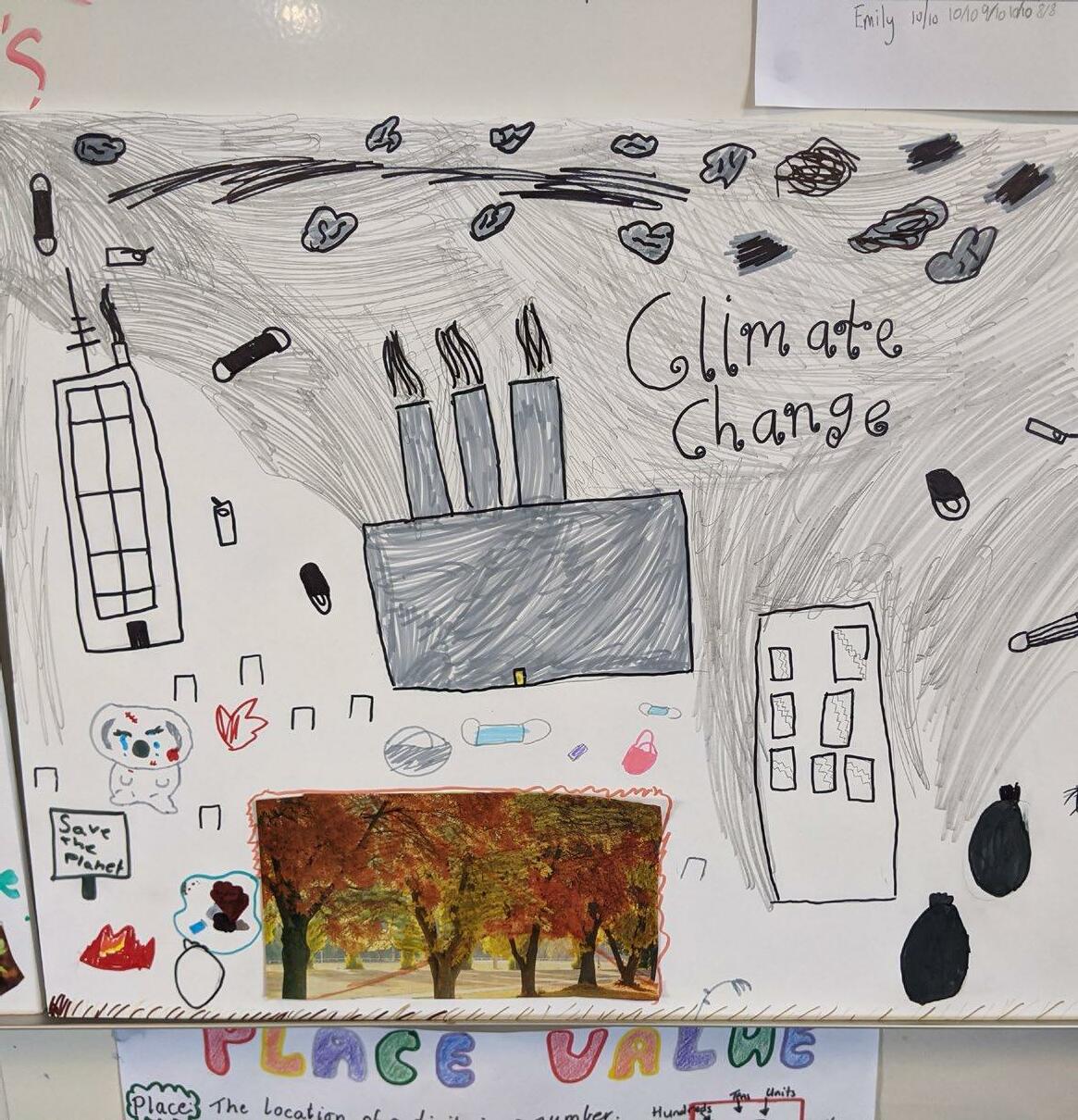
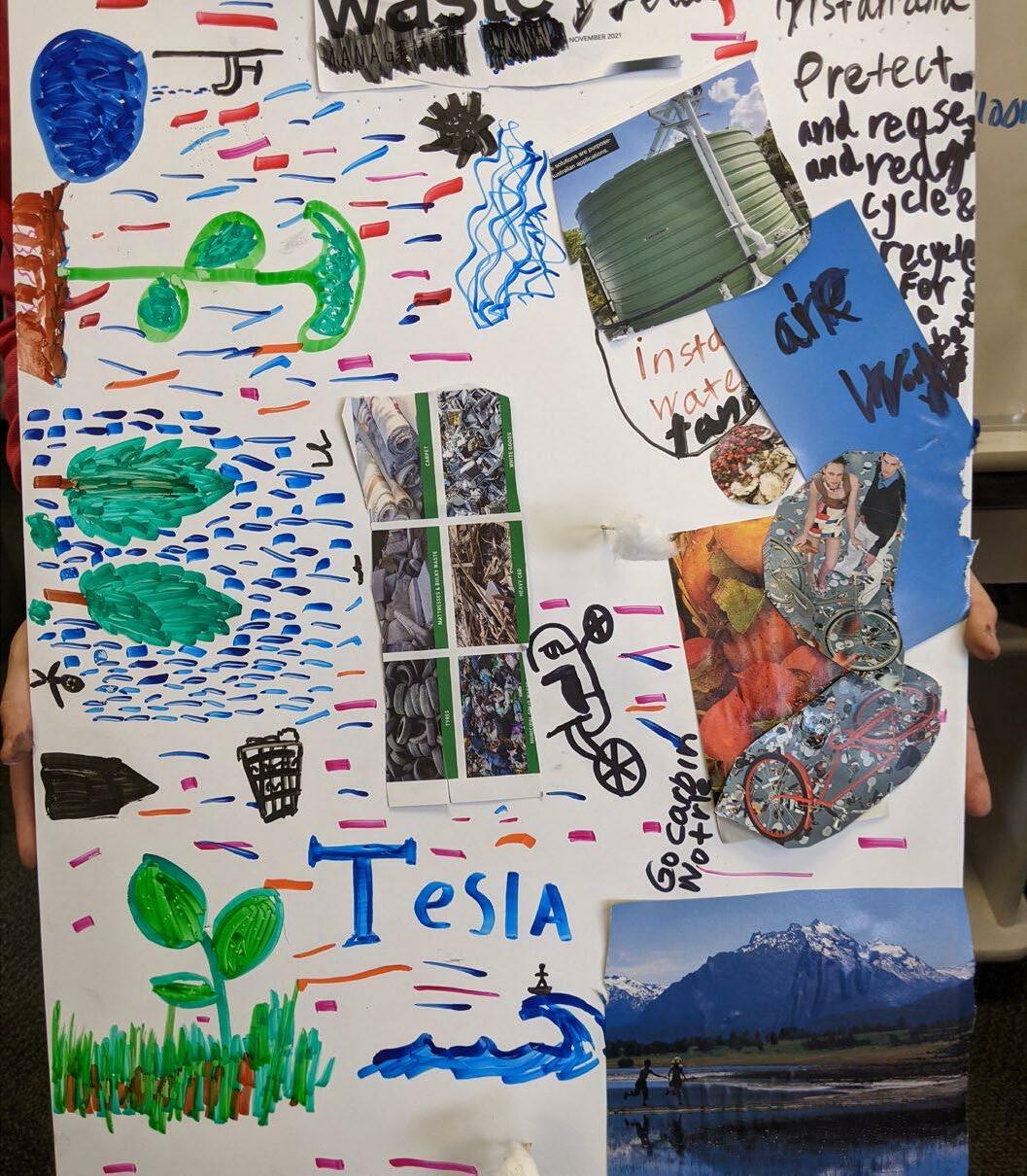
The actions
to
Reviewed by Date
Environment and Sustainability Coordinator May 2022 Environment and Sustainability team and other relevant Council teams May 2022 Community, Places and Environment Manager June 2022 Director of Infrastructure and Development June 2022 Councillors July 2022 - Strategic Council Meeting Golden Plains Shire community September 2022 Endorsed by Councillors for adoption October 2022

APPENDIX C MONITORING AND REPORTING
Council commits to delivering this Plan for the Golden Plains Shire community, and communicating progress and opportunities for improvements to Councillors and the broader community on a regular basis. At key points during the lifetime of the Plan Council will proactively seek community feedback on the Plan’s delivery to date.
Task Timeframe
Review targets and actions
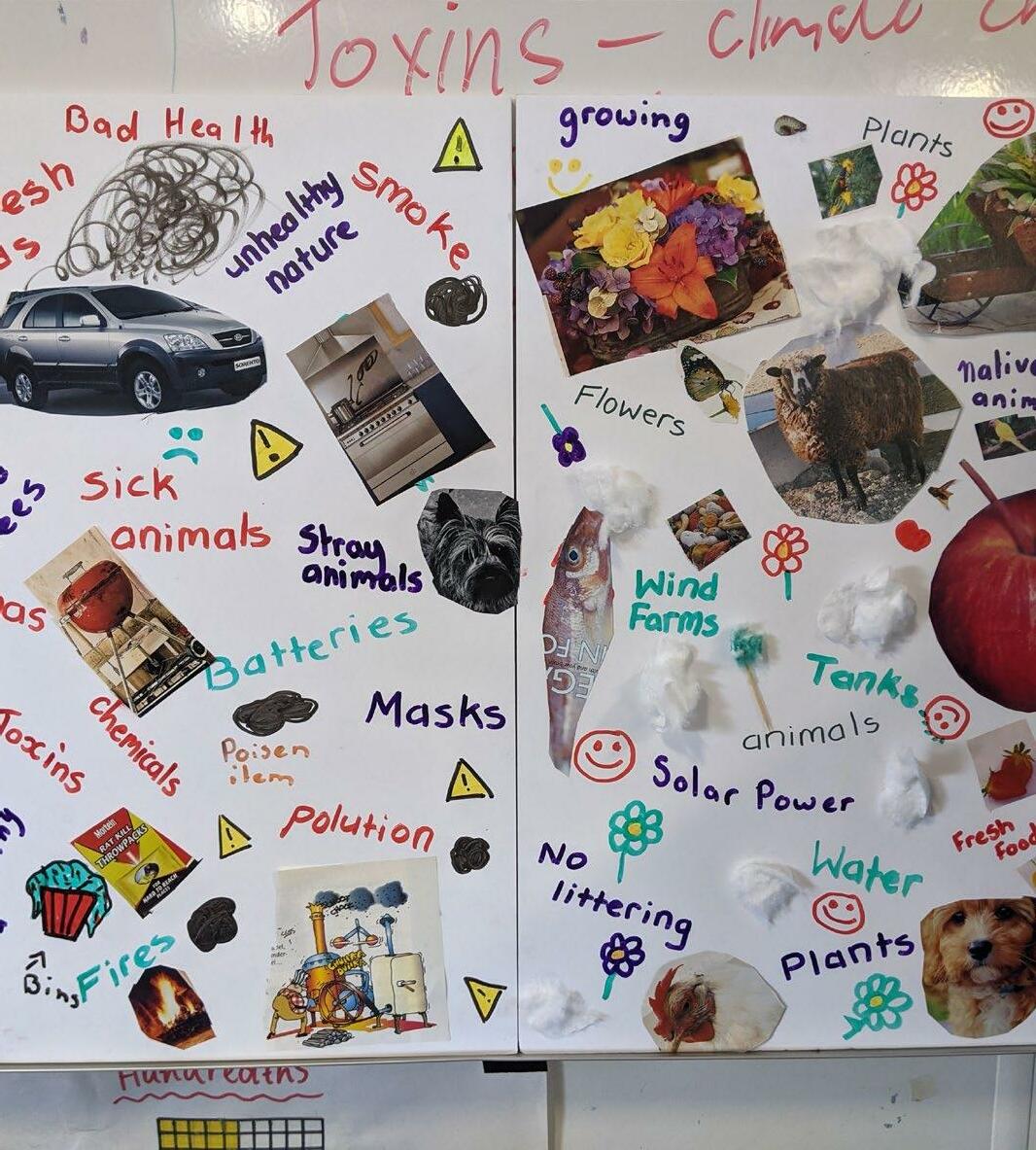
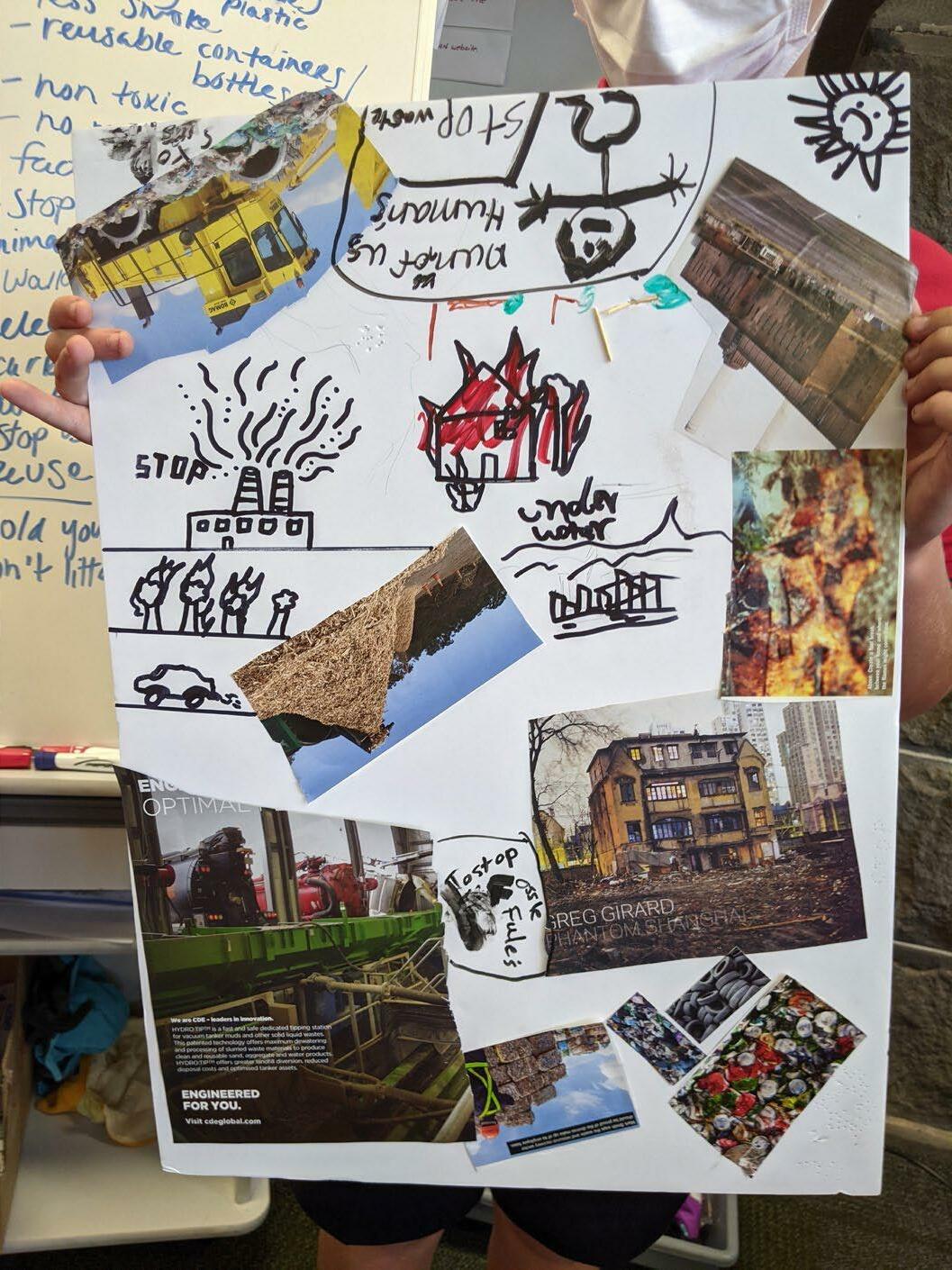
Provide an update to Councillors
Produce a publicly available summary document reporting on progress and outcomes of actions
Consult with the Golden Plains Shire community to gather feedback about implementation and outcomes
Annually
Annually
Every two years
Two times during the lifetime of the Plan
Plains

